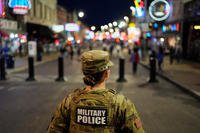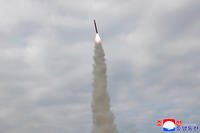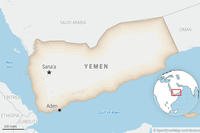The U.S. Space Force has determined how it will be organized, right down to the squadron level.
The newest military branch on Tuesday announced that it will operate with three primary field commands, responsible for training space professionals; acquiring space systems from industry; and supporting combatant commanders with space force personnel and capabilities.
The three primary field commands expected to be activated later this summer are: Space Operations Command (SpOC), Space Systems Command (SSC), and Space Training and Readiness Command (STARCOM), according to a release.
Read Next: Pentagon Lifts Travel Ban in All States Except Florida, California, Michigan
In the Air Force, subordinate to its headquarters is the major command, which is then composed of a numbered air force, wing, group, squadron and flight. The Space Force by comparison will only have three echelons of command: the field commands, deltas and squadrons, officials said.
"This is the most significant restructuring of space units undertaken by the United States since the establishment of Air Force Space Command in 1982," Air Force Secretary Barbara Barrett said in a statement. "Innovation and efficiency are driving our mission as we position the Space Force to respond with agility to protect our nation's space capabilities and the American way of life."
STARCOM will be responsible for educating and training space professionals, according to the Space Force announcement. A two-star general will oversee this field command; officials estimate STARCOM will be active by 2021.
Meanwhile, a Space Force officer in the rank of O-6 will lead a provisional Space Training and Readiness Delta, to be established at Peterson Air Force Base, Colorado next month.
"This unit will serve as the parent organization for a number of education, training, and operational test and evaluation units transferring to the Space Force in summer 2020," officials said.
The service said deltas will be led by O-6 officers, a rank equivalent to Navy captains or colonels in the other services, and will be organized to support a specific function, such as operations, training and installation support. Squadrons manage the "specific tactics" needed to execute the Space Force mission, according to the announcement.
Meanwhile, the SpOC will be the provider of forces for the combatant commands, coalition partners and the joint force.
In December, the Air Force announced it had renamed one of its numbered Air Forces, 14th Air Force of Vandenberg Air Force Base, California, as SpOC. Now it will be renamed once again following the organization of SpOC as a field command, anticipated at Peterson Air Force Base, Colorado. An estimated activation date was not provided.
Unlike STARCOM, SpOC and Space Systems Command will be led by three-star generals, officials said.
The last element of the triad, Space Systems Command (SSC), will oversee space acquisition and launch. Its other authorities include developing and fielding "lethal and resilient space capabilities for warfighters" and "developmental testing, on-orbit checkout, sustainment and maintenance of [Space Force] space systems, as well as oversight of [Space Force] science and technology activities."
The Space Force will draw from current organizations, such as the Space and Missile Systems Center and the Commercial Satellite Communications Office, to create the foundation for SSC, the release said.
When the command structure is fully achieved for all three commands, leadership will eliminate "one general officer echelon and one O-6 echelon of command" in order to streamline operations.
The sixth military service, which was signed into existence by President Donald Trump on Dec. 20, 2019, is currently operating with the aid of 16,000 airmen, detailed temporarily from what was formerly known as Air Force Space Command.
Officials have said that about 6,000 of those temporary personnel will be offered the opportunity to formally transfer into the Space Force by year's end. Earlier this month, the service said that more than 8,500 active-duty airmen had volunteered to transfer into the branch.
"This is an historic opportunity to launch the Space Force on the right trajectory to deliver the capabilities needed to ensure freedom of movement and deter aggression in, from and to space," Gen. Jay Raymond, Space Force chief of space operations, said Tuesday. "How we organize the Space Force will have lasting impact on our ability to respond with speed and agility to emerging threats in support of the National Defense Strategy and Space Strategy."
Other pending Space Force decisions include base renaming, uniform updates, insignia and a logo design.
Officials are also still deciding what to call Space Force members.
-- Oriana Pawlyk can be reached at oriana.pawlyk@military.com. Follow her on Twitter at @Oriana0214.














